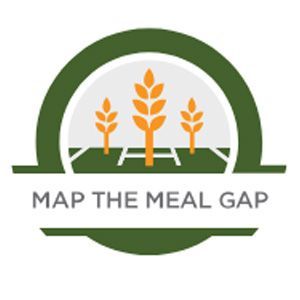
Hunger impacts every community in the United States, from coast to coast, border to border. But, Feeding America has tools to understand food insecurity at a local level and – in partnership with communities – inform action. One such tool is Feeding America’s annual Map the Meal Gap study, which provides local-level estimates of food insecurity, food costs and more. The only study of its kind, Map the Meal Gap helps us address factors impacting hunger, and unite to ensure everyone has access to the food and resources we all need to thrive.
Read on for four key takeaways from this year’s Map the Meal Gap study.
1. 100 percent of counties in the United States experience food insecurity
Hunger exists everywhere. Map the Meal Gap continues to find that food insecurity impacts every county, parish and congressional district in the United States. While food insecurity levels vary across the country, eight of 10 high food insecurity counties are in the South. Meanwhile, in some counties, hunger among children can reach nearly 50 percent.
2. The amount of money neighbors facing food insecurity need to afford food has increased significantly
This is called the national food budget shortfall. It’s a measure of the extra money people facing food insecurity report needing to cover food. This year, the shortfall is up to $33 billion, an increase of nearly 43 percent from the previous year. Essentially, this means that for every person facing food insecurity, they’re short almost $25 dollars per week, on average, in funds needed to afford food. Meanwhile, according to the report, the cost per meal has increased to its highest point in the last two decades – at just under $4.
3. Racial disparities in food insecurity persist across the country
Nearly 40 percent of people facing hunger in the United States are white, but in most counties, the food insecurity rate of Black and Latino individuals exceeds that of the white population. While Map the Meal Gap does not include data on additional racial and ethnic populations, these disparities illustrate the significant impact of historical, social, environmental and economic factors that disproportionately impact communities of color.
Learn more about Map the Meal Gap and how food insecurity impacts your community.
